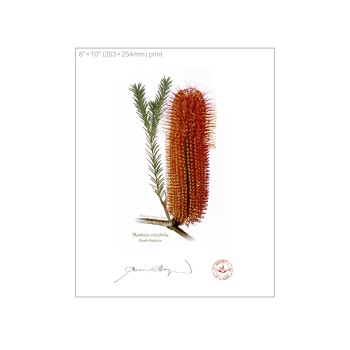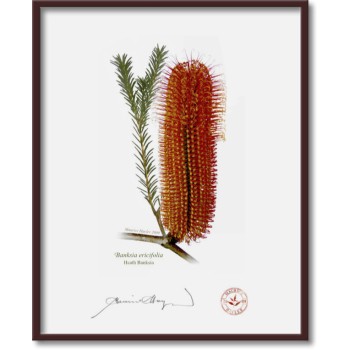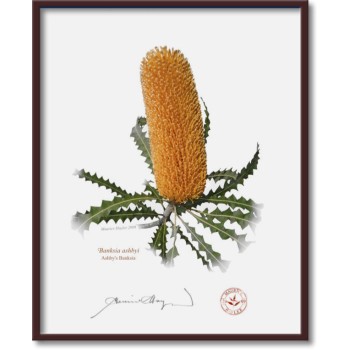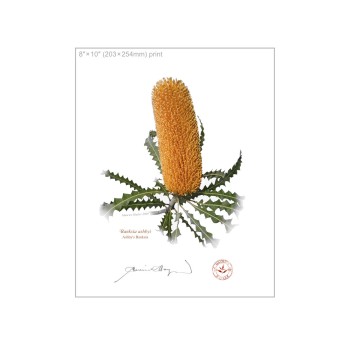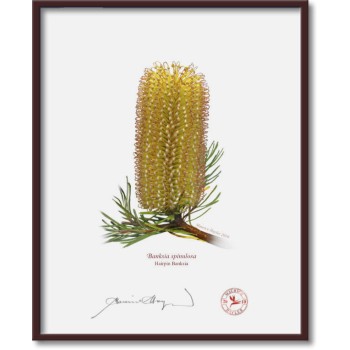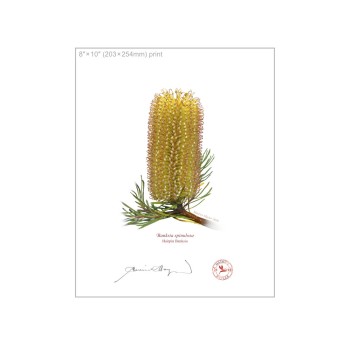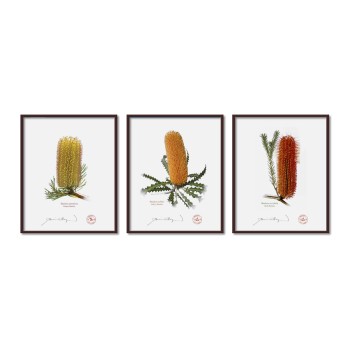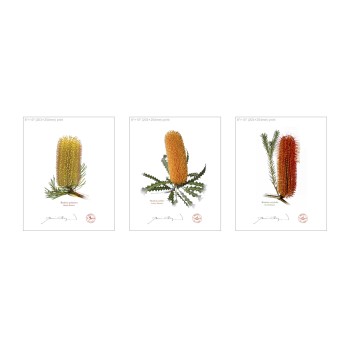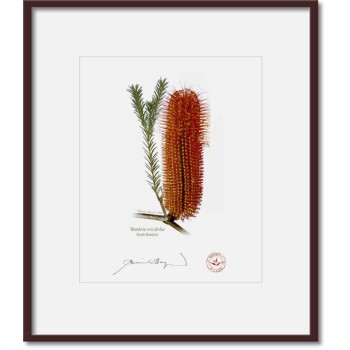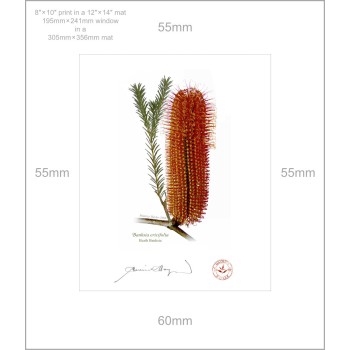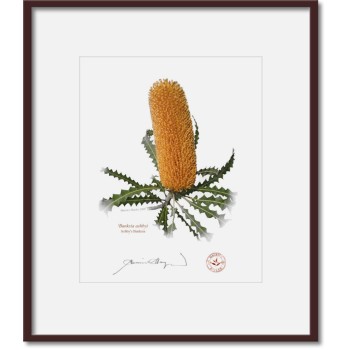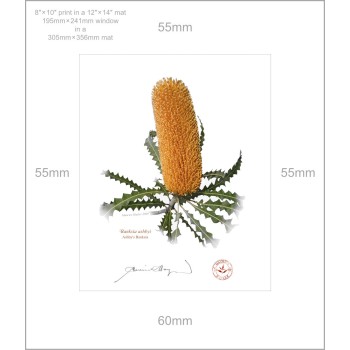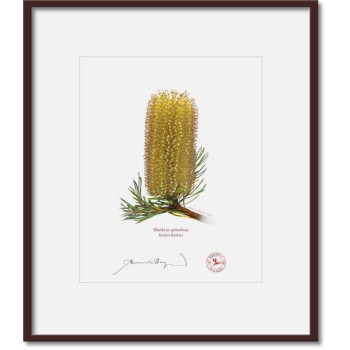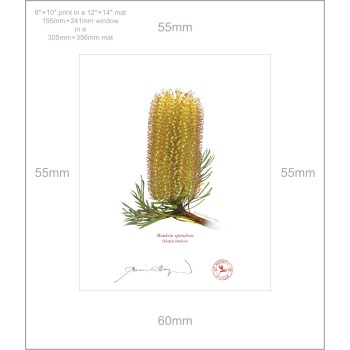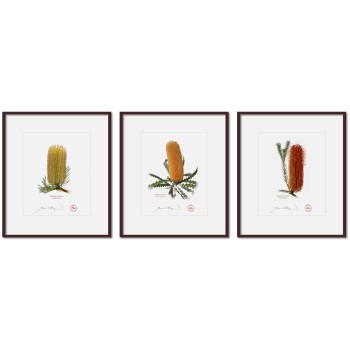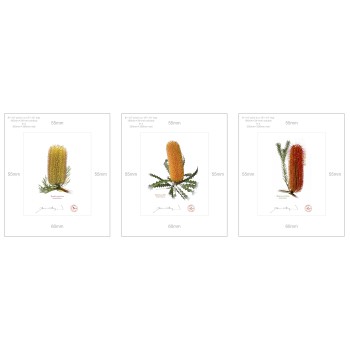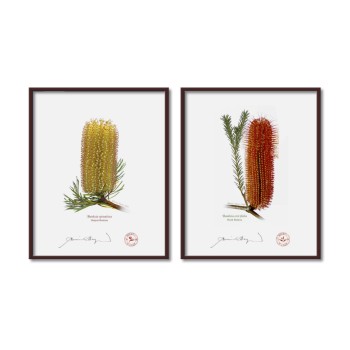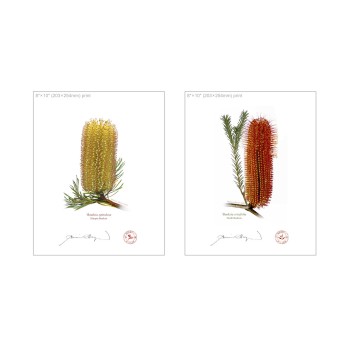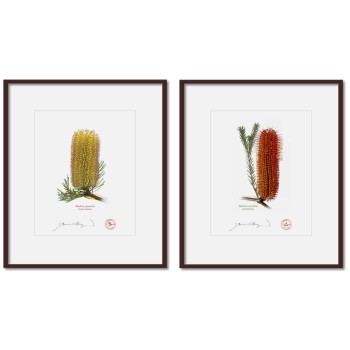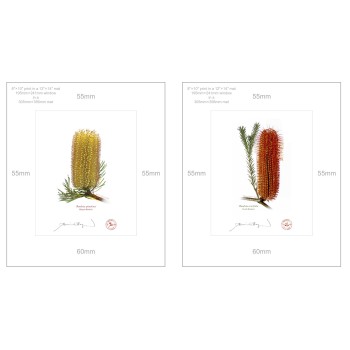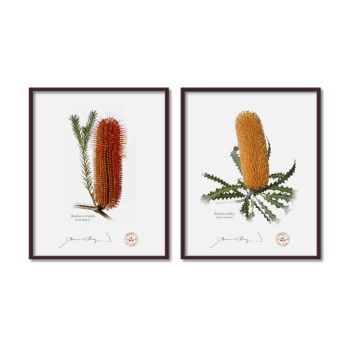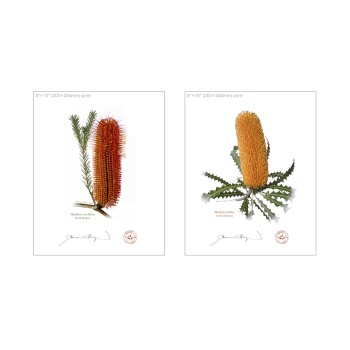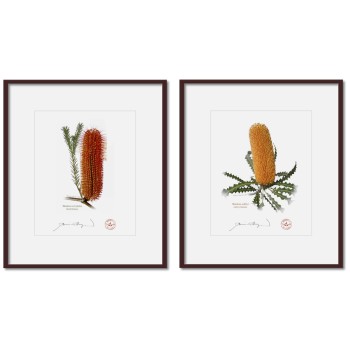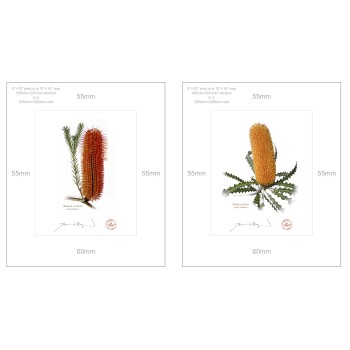Australian Botanical prints by artist Maurice Hayler, designed to endure.
Each print carries the artist’s signature and is stamp-embossed for authentication.
Our art is printed with care on Hahnemühle fine art archival paper with archival Epson UltraChrome pigment inks, good for at least 75 years. View all print and mat sizes here.
Please Note: that all orders typically leave within one to two business days.
We can (and do) process urgent and express orders on request.
Availability: In Stock
Ex Tax: $44.55
Please note that frames are not included and those shown in images are for display purposes only.
We do offer custom framing should this interest you.
All available print and mat sizes are covered in detail here, but to summarise:
Flat prints are printed sheets, trimmed to size, with no mat or backing supplied.
We offer the following sizes:
5″ × 7″ (127mm × 178mm)
8″ × 10″ (203mm × 254mm)
A4 (203mm × 297mm)
Our matted prints are the same printed sheets, but placed in archival (acid-free) mat and backing ready to frame.
(You can read more about our acid-free materials here.)
These come in the following sizes:
5″ × 7″ in a white 8″ × 10″ mat (outer dimensions are 203mm × 254mm)
8″ × 10″ in a white 12″ × 14″ mat (outer dimensions are 305mm × 356mm) (please note this is a non-standard size: read more here)
A4 in a white 12″ × 16″ mat (outer dimensions are 305mm × 406mm)
More detailed information about all print and mat sizes is here.
Botanical Information:
Family: ProteaceaeGenus: Banskia
Species: ericifolia
Meaning of name:
Banksia, after Sir Joseph Banks (1743–1820), an English naturalist and botanist who accompanied (then) Lieutenant James Cook on the Endeavour in 1768–1771, and who did much to bring Australian botany to the European world
ericifolia is from Latin: erice, heath or heather plant + folium, leaf. Having leaves like those of heath or heather, or more specifically, having the leaves of genus Erica (the heaths and heathers)
Banksia ericifolia was apparently the first plant ever collected by Joseph Banks at Botany Bay in 1770. It was Carl Linnaeus the Younger, son of Carolus Linnaeus, who described the specimen in 1782, in honour of Banks.
This print features in the Banksia Flower Collection 1 triptych collection, the Banksia Flower Collection 3 diptych collection, and the Banksia Flower Collection 4 diptych collection.



